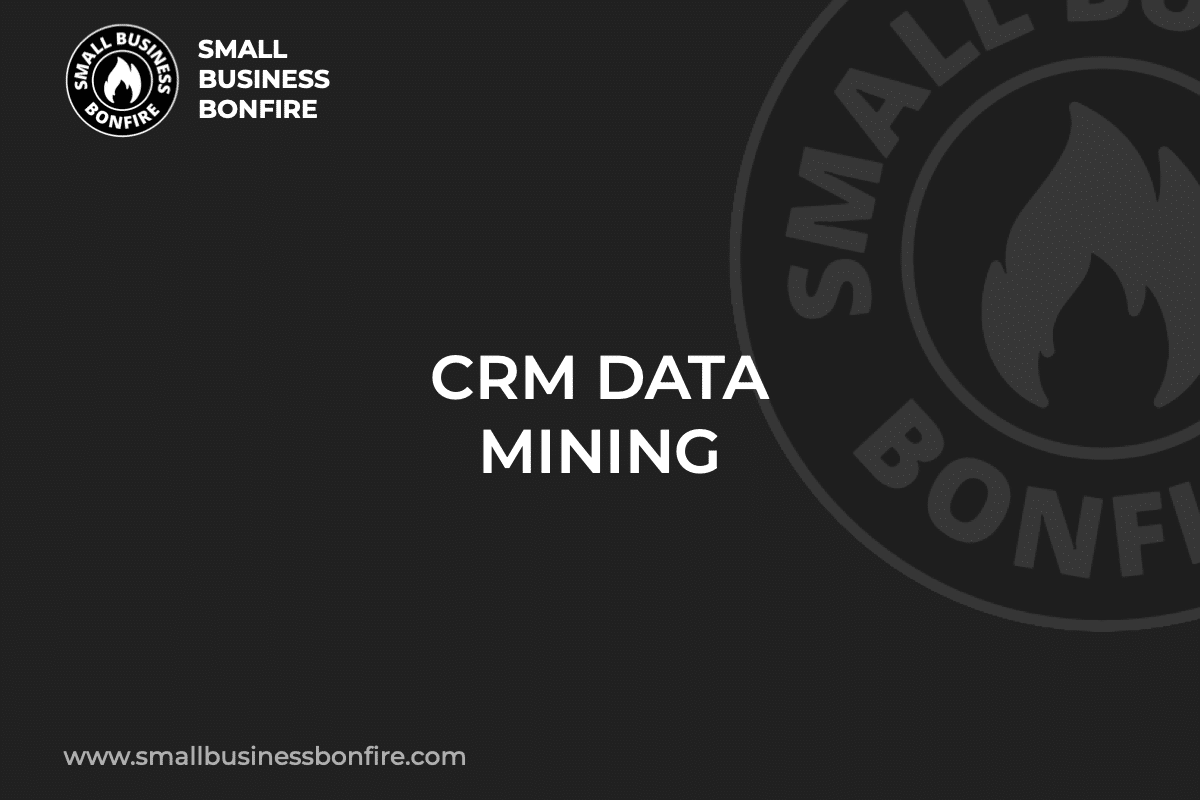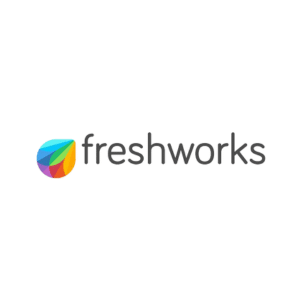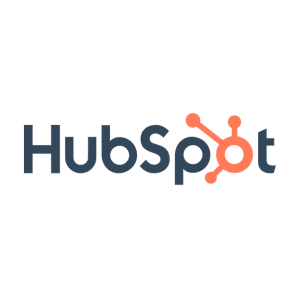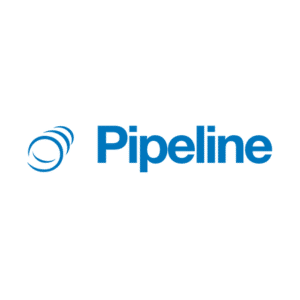Has your company tried a new marketing technique only to find it was ineffective and costly?
This happens to a lot of small businesses because they don’t understand their target audience as well as they think they do.
Hi! My name is AJ! I recently sold my business for multiple seven figures. My goal is to unravel common small business problems, helping entrepreneurs save time and money!
After building a business for several years, I uncovered the importance of successful data collection and how to utilize this data effectively.
Not sure where to start with data mining? That’s okay! Follow me as I introduce you to everything you need to know!
Key Takeaways
- Data mining involves searching and analyzing large batches of raw data to make informed business decisions.
- Using data mining strategies and CRM software uncovers patterns and strategies to boost sales.
- CRM systems organize information and help businesses understand their customers better.
- Data mining techniques help prevent and detect fraudulent activities and purchases.
Related Reading: Best Small Business CRM
SBB Featured Partners
What is Data Mining?
Data mining is when a company uses software to search and analyze large batches of raw data.
Then, companies use this information to identify patterns and other helpful information.
Why do businesses utilize data mining?
Easy! This technology allows small to large businesses to learn more about customer relationships.
In the long run, data mining techniques can lead to:
- More effective marketing campaigns
- An increase in sales
- Lower costs
- More accurate and specific customer segments
There are several advantages to using data mining (which I’ll uncover next)!
Benefits of Data Mining
There are several benefits of using data mining tools.
Most importantly, this software ensures your company collects and analyzes reliable data.
The adverse effects of inaccurate and outdated data cannot be overemphasized.
Bad data can lead to poor decision-making, ineffective ad campaigns, and inaccurate customer data.
However, with data mining, companies can quickly identify problems or ineffective strategies and gather data related to that problem.
As a result, businesses are more profitable, efficient, and productive when they use data mining correctly.
Another significant benefit of data mining technologies is that they create value from information a company has available but otherwise wouldn’t use.
Analyzing past transactions and other customer life cycle data by hand is time-consuming and mundane.
Data mining technology identifies patterns and areas of optimization with ease.
Elements of Data Mining
Now I’ll briefly review three primary elements of data mining, which include the following:
- Descriptive data modeling
- Predictive data modeling
- Data forecasting
Let’s look closer at each of these elements!
Descriptive Data Modeling
Descriptive data mining is a technique that shows companies what happened in the past.
For instance, descriptive data modeling strategies analyze the past data a company stores in its records or CRM system.
This historical data summarizes what a business’s existing customers liked and disliked about the sales process, products or services, etc.
Therefore, it’s best to utilize this data for monitoring and reporting purposes!
Predictive Data Modeling
Predictive data mining is when companies analyze different kinds of data to predict future events, sales trends, etc.
Predictive modeling helps companies make better decisions because they are data-driven (instead of simple guesses).
While predictive modeling isn’t always 100% correct, it still gives companies a better idea of what to expect in the future.
Knowing what to expect allows teams to prepare strategies and techniques for future occurrences (whether they be good or bad).
Data Forecasting
Data forecasting and predictive data modeling are somewhat similar.
However, data forecasting is a technique that uses historical data as inputs to make informed estimates.
Then, these estimates help determine the direction of future trends within the company.
Usually, businesses use data forecasting strategies to plan their budgets and allocate resources effectively.
What is CRM?
What is CRM? Customer relationship management (CRM) software is designed to streamline business processes, especially in customer interactions.
CRM systems work to compile customer data across several points of contact between the customer and the company.
For example, CRM tools collect data from the following places:
- The company’s website
- Telephone calls
- Live chat
- Direct mail
- Marketing campaigns
- Social media platforms (Instagram, Facebook, Twitter, etc.)
This valuable tool ensures businesses understand their target audience and existing customers better.
As a result, teams implement more effective marketing strategies that ensure consumers connect with them.
Benefits of CRM
There are many CRM benefits that can significantly enhance a business’s customer service, sales, and marketing efforts.
Regarding customer service, a CRM ensures businesses can quickly respond to customer inquiries and issues, as all customer information is stored in one place.
As a result, this leads to improved customer satisfaction and loyalty.
Additional benefits of customer relationship management software include:
- It creates an efficient organizational system
- It helps teams understand the sales pipeline better
- Increases customer retention
- Streamlines business processes and communication
- Automates repetitive tasks
- Helps teams be more productive
CRM data positively impacts every department, from sales to marketing teams!
What Data Is Collected in a CRM?
Let’s see what types of data CRM tools collect to streamline business operations!
Individual Contact Data
First, CRM systems collect individual contact data.
This information includes:
- Names
- Places of work
- Email address
- Phone number
- Social media handles
With this information, companies know where and how to contact and get in touch with prospective customers.
Although this customer data is simple, it’s essential to the sales process and understanding the customer.
Holistic Database Information
Customer relationship management systems also store holistic database information.
This type of data consists of the following metrics:
- Transactions records
- Payment history
- Lead scores
- Products/services used by customers in the past
With holistic data, companies can better understand their customers and their interactions with the business.
Therefore, this information helps segment customers and ensures marketing teams deliver effective ads and campaigns.
A CRM database also helps companies track customer preferences, which is essential for personalization.
General Online Data
Finally, CRM systems store general online data.
This data includes website activity metrics, such as:
- How long customers spend on a page or product description
- Common search terms customers use to find the company’s site
- How a customer interacts with a brand on social media
- The types of ads and email marketing campaigns a customer responds to and interacts with
Companies can adjust their content more appropriately and effectively by collecting this information.
Benefits of Data Mining In CRM
CRM data mining is extremely beneficial! Collecting and analyzing historical data ensures your team makes informed decisions.
Let’s see the primary advantages of utilizing data mining in CRM!
Helps Sales Forecasting
Data mining in CRM shows companies the optimal times or data for their sales reps to reach out to potential customers.
Additionally, this information indicates the communication channel your team should use (email, phone call, text).
Data mining for sales forecasting purposes is especially beneficial for retail and e-Commerce businesses because it promotes more upselling and cross-selling opportunities.
Helps Market Segmentation
Data mining techniques can also help businesses create market segments.
For example, CRM data mining looks at a broad market and creates silos, which are helpful when planning marketing campaigns and demanding on-point messaging for the right group.
How do you build customer segments? Companies can create segmentations based on the following details:
- Demographics
- Purchase patterns and preferences
- General interests
- Psychological consumer patterns
Better segments ensure your sales and marketing teams create personalized campaigns for each customer!
Helps Making Quick Business Decisions
Data mining in CRM also helps make quick business decisions.
Therefore, business leaders can quickly assess the situation and take corrective action if an issue arises.
Data mining helps predict customer behavior and trends teams need to know about.
For example, data mining techniques will help you figure out the following:
- When to launch a new product
- What regions need more marketing support
- When customers are likely to make purchases
- What messages resonate with each customer group
Also, these tools identify hidden patterns, ensuring you catch mistakes or ineffective strategies immediately.
In the long run, an organized data warehouse helps your business make intelligent decisions when you know of a problem, pattern, or opportunity.
Helps Fraud Detection
CRM data mining is helpful when it comes to fraud detection.
Detailed customer information allows your team to detect any suspicious or fraudulent activity quickly and easily.
For example, your team can analyze customer orders that have been canceled for no apparent reason or identify customers who are placing excessive orders.
With this type of analysis, you can avoid fraud and create an even safer customer experience.
Ensuring your customers feel safe shopping with your brand is critical (especially when shopping online).
Several scammers attempt to steal personal information such as credit cards and Social Security numbers.
Therefore, using statistical algorithms and CRM analytics to detect fraud is vital!
Helps Increase Customer Loyalty
Using data mining in CRM software increases customer loyalty.
Satisfied customers are likelier to remain loyal and refer your products or services to others.
CRM data mining helps you understand what content resonates with each customer segment, ensuring you develop creative ideas for new campaigns.
Also, you can combine individual customer data with sales forecasting information to identify which products to offer each customer.
Further, you can use data warehouses to determine when a customer is close to abandoning a sale and take appropriate action.
For instance, you could send personalized emails or discounts for their next purchase as an incentive if you notice the customer abandons their cart online.
Why are personalized campaigns and messages important?
In today’s world, consumers value a pleasant shopping experience and their connections with specific brands.
Therefore, when customers feel a team caters to them as they’re shopping, they’re likelier to be more brand loyal and continue buying those products even if they cost more.
Helps Predict Numbers for Warranty Claims
Does your company offer warranties for your products or services?
In that case, data mining and CRM systems can help predict the number of warranty claims in advance.
This type of analysis is essential to understand which product attributes require more attention or need improvements.
Predicting warranty claims is one of the more advanced data mining techniques.
This strategy allows you to identify patterns related to previous customer interactions to predict the number of warranty claims in particular areas.
For example, if you notice a spike in warranty claims for certain products or services in a specific region, you can understand why and adjust your strategies accordingly.
Applications of Data Mining in CRM
How can your company utilize data mining alongside your CRM system?
Fortunately, there are several ways to apply data mining to your daily CRM practices.
Let’s look application of data mining in customer relationship management!
Basket Analysis
Basket analysis helps your team identify the items customers tend to buy together.
Therefore, you can improve warehouse stocking and ensure products are adequately stocked.
Also, basket analysis improves store layout strategies and promotions.
For example, you can stack certain products together or near each other for maximum visibility and customer engagement.
Or, if your customers primarily shop online, you can recommend products or services after someone adds something to their cart.
Basket analysis promotes more upsells and cross-selling opportunities, leading to more sales and revenue for your company!
Sales Forecasting
Data mining and CRM software can also help you forecast upcoming sales.
You look at both historical and present data to understand which factors influence customer purchase decisions.
Analyzing data helps you develop more effective marketing strategies for specific audiences or channels.
Also, data analysis helps your team adjust prices effortlessly according to the market demand.
Sales forecasting is an excellent strategy to ensure your company stays up to date with trends and fluctuations in your industry.
Meeting customer demands leads to more sales and higher customer loyalty rates because your audience trusts you understand their needs.
Database Marketing
Database marketing allows companies to build customer profiles based on numerous factors.
For example, companies base these profiles on the following factors:
- Demographics
- Shopping preferences
- Interests
- Buying patterns
- Shopping history
Database marketing also helps your marketing team design the most effective ad campaigns and promotional offers.
As a result, your team is more productive, uses resources optimally, and earns high returns on investments!
Predictive Lifestyle Management
Predictive lifestyle management is another popular data mining application in customer relationship management.
This strategy helps your team identify customers likely to purchase a certain product or service.
Your company can target these customers with tailored messages and offers that better resonate with their needs.
Also, predictive lifestyle management allows you to provide personalized content to customers.
Therefore, you can ensure customers are more engaged and satisfied with your products or services.
Data mining ensures your company can predict each potential and existing customer’s lifetime value.
Therefore, your team can attend to each customer with the necessary resources.
Market Segmentation
With data mining applications, your company can astonish specific customer tgroup[s and cater to these groups more effectively.
Therefore, you can learn which customers are most interested in buying your products or services.
Then your marketing team can craft unique, personalized campaigns and promotions to cater to their tastes and preferences.
Designing campaigns that resonate with specific customer segments increases efficiency and leads to more sales with a higher return on investment.
Correct market segmentation ensures your marketing team doesn’t target customers who are unlikely or uninterested in buying your products or services.
Catering to the wrong segments wastes everyone’s time and your business’s money!
Fraud Detection
Data mining applications can also help your team identify fraud faster.
Analyzing past fraudulent transactions ensures you take the correct precautions to prevent that from happening again.
Institutions like banks and other financial entities benefit significantly from this feature.
Additionally, online stores use this feature to ensure customer information and online purchases are safe.
Fraud detection helps your company save money because you lose fewer sales to fraudulent activities.
Product Customization
Many manufacturers can customize products according to precise customer specifications.
However, to personalize products, you must first understand your target audience and what they desire.
Therefore, data mining valuable information such as social media activity and previous purchases indicates the products or services your company must push on customers.
Customization helps create better customer satisfaction and loyalty because consumers feel the shopping experience is catered to their needs and wants.
Warranties
Lastly, data mining applications assist businesses with warranties.
Companies issue a specific number of warranties every year.
And being able to predict the number of customers who will make warranty claims helps your company manage its money better.
Data mining can also help predict the average value of each warranty claim.
Therefore, your company doesn’t appear to be losing too much money because you have already budgeted for the average number of warranties in the fiscal cycle.
Techniques for Data Mining in CRM
There are several ways to utilize the data stored in your CRM platform.
The five standard data mining techniques I’ve used numerous times include the following:
- Anomaly detection
- Association rule learning
- Clustering
- Classification
- Regression
Let’s look at each technique closer!
Data Mining Technique 1: Anomaly Detection
The first technique is anomaly detection!
Anomaly detection is when companies search through previous data to find cases where the actual information is different from what actually happened or what was planned.
Why is this useful?
With anomaly detection, your team can find and eliminate minor problems before they become problems that cost your company significantly.
Data Mining Technique 2: Association Rule Learning
The second technique is association rule learning.
This strategy utilizes huge data warehouses and other large data sets.
With association rule learning, your team can employ hypothetical algorithms and find connections throughout large data sets.
Therefore, association rule learning is a less directed and more open-ended way to find a competitive advantage with your business data.
Still, association rule learning is an excellent way to find patterns in seemingly disorganized chunks of data.
Data Mining Technique 3: Clustering
Clustering is a data mining technique in which companies have several unlabeled data inputs that need organization.
Unlike classification (I’ll get into that next), clustering is when teams do not yet have categories in mind for organizing their data.
Therefore, companies use clustering to sort data into categories and identify areas that demand attention or immediate action.
Clustering ensures problems don’t spread throughout the company because teams are aware of them early.
Data Mining Technique 4: Classification
Classification is a data mining strategy that is most effective when you have somewhat labeled and categorized data segments.
The classification process is when teams organize their existing labeled data into classifications.
Companies use decision trees to identify patterns, anomalies, etc., within their data.
However, classification typically doesn’t guide future business actions.
Data Mining Technique 5: Regression
Lastly, there’s regression, an advanced data mining technique.
Companies use regression to find connections and dependencies between data points.
Additionally, regression helps teams see how data changes when certain variables are considered.
How do companies use regression effectively?
Regression is a data mining strategy that deals with marketing trends and customer satisfaction analyses.
Wrapping Things Up!
In conclusion, CRM data mining is an incredibly powerful tool that can unlock a wealth of insights and opportunities for your business.
From detecting anomalies to predicting customer behavior, the applications and techniques of data mining in CRM are vast and varied.
Data mining allows your company to forecast sales, detect fraud faster, and create detailed market segments.
How will YOUR team utilize data mining in CRM? Let us know in the comments section below!
And good luck finding a CRM system that offers the tools and functionalities your company demands to thrive!
Newsletter Signup
Join The Leads Field Guide Newsletter for tips, strategies and (free) resources for growing your leads, and closing more deals.




